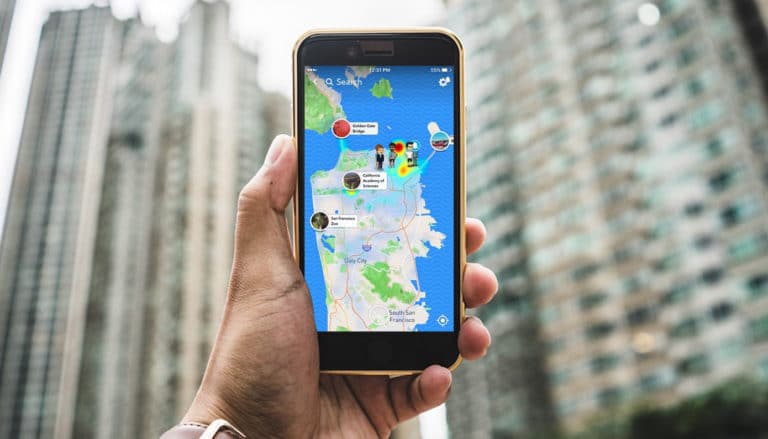
Location technologies continue to play a role in Snapchat’s product evolution. That includes AR, such as Landmarkers and Local Lenses, but it also extends into Snapchat’s broader road map. Like Google, Facebook and others, Snap sees location as a relevance-trigger.
Starting with Snap’s broader product evolution beyond AR, the thought is that social interaction is largely tied to the real world (lockdowns aside). So if Snap can add layers of social relevance based on where you are and where you’ve been, it can deepen connections and engagement.
This thinking drove Snap’s 2017 acquisition of Placed, which it subsequently divested for other reasons. It’s since shown intent to carry the social mapping baton farther. Among other signals, Snap’s Alex Dao told me as much during an interview at the recent Localogy 20/20 conference.
According to Dao, Much of Snap’s location strategy orbits the Snap Map, which geo-tags users and their Snaps on a map interface. 200 million Snapchatters use it to find each other, and Snap has begun to monetize that engagement by letting local businesses promote themselves.
Crowdsourcing Location
All of the above was advanced last week with Snap’s acquisition of location data platform StreetCred. The deal will bring four members of StreetCred team to Snap, where they’ll work on strengthening the geo-data backbone of Snap Map and other location-based initiatives.
This should have an impact, given the talent involved. Co-founder Randy Meech was formerly CEO of Mapzen, a Samsung-owned open mapping startup. Co-founder Diana Shkolnikov also worked at Mapzen as engineering director. StreetCred itself will be shut down following the deal.
StreetCred’s approach is to “open up and decentralize” location data using a blockchain-based marketplace that incentivizes users to collect mapping data. This crowdsourced approach is similar to the ways Niantic empowers its users to gather spatial maps while playing Pokémon Go.
It also aligns with Snap’s comments at its June partner summit when it announced Local Lenses. It said at the time that it plans to use Snapchat user activity and Snaps to build a 3D map of the world to strengthen its location-based AR capabilities — its own version of an AR cloud.
In this way, the StreetCred acquisition could have direct impact on Local Lenses and Snap’s overall location-based AR play, though the explicit acquisition driver was for Snap Map. These initiatives all tie together in some way, so there are implications for AR either way.
Big Picture
The crowdsourcing approach also fits the profile. As Dao told me, Snap’s Gen-Z-heavy user base is active, engaged and mobile. They have $323 billion in direct purchasing power and $1.2 trillion in indirect purchasing power. This will only grow as they phase into the adult consumer population.
That brings us back to monetization. Snapchat last year launched a new program that lets businesses buy map-based promotions on Snap Map in a self-serve manner. Known as Promote Local Place it allows them to create promoted listings to drive foot traffic from Snap Map users.
Beyond unique access to all those buying-empowered Gen-Z users, Dao emphasizes the organic “discoverability” that Snapchat offers SMBs. Given the migratory user habits noted earlier, Snapchat users are socially active in the real world, albeit less so in the age of Covid.
Panning back, Snap continues to inch closer to local commerce. Historic steps include geo-filters, and recent moves include Local Lenses. Those features are notable on their own but get more interesting when considering the business promotional implications that come with them.
Speaking of the big picture, Snap’s ongoing efforts to infuse location relevance into its products go beyond AR. But AR is central to those efforts, as should any technology that inherently fuses the digital and physical worlds. Expect Snap’s moves in 2021 to continue to reflect that mission.






